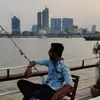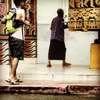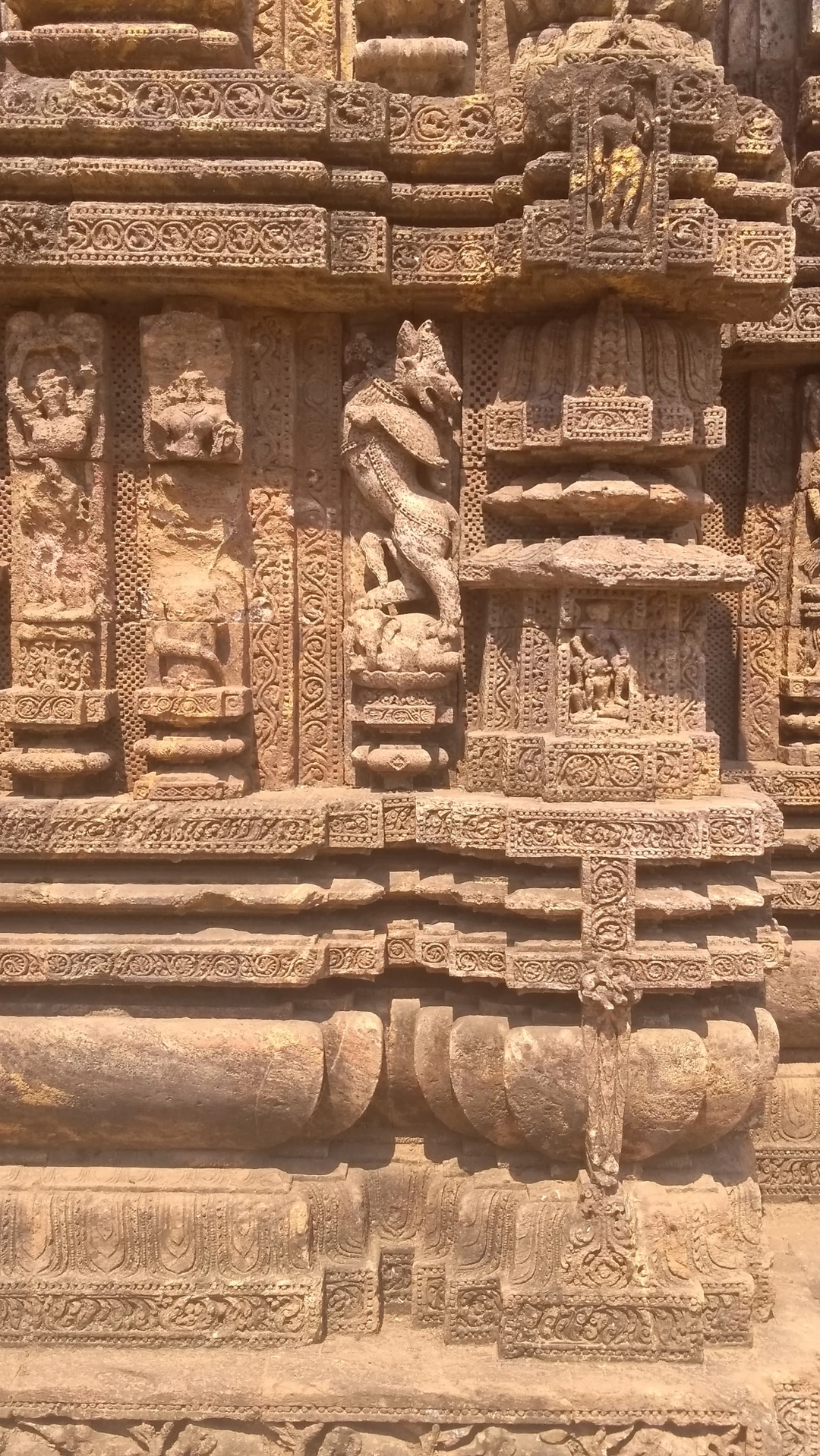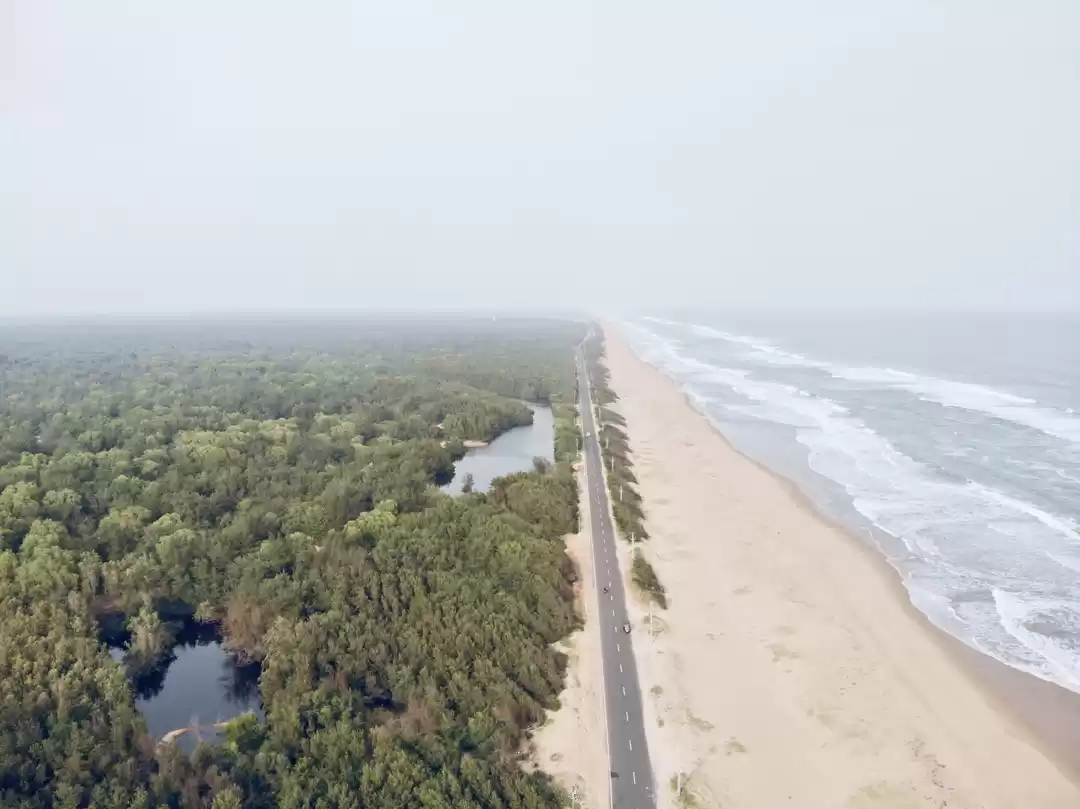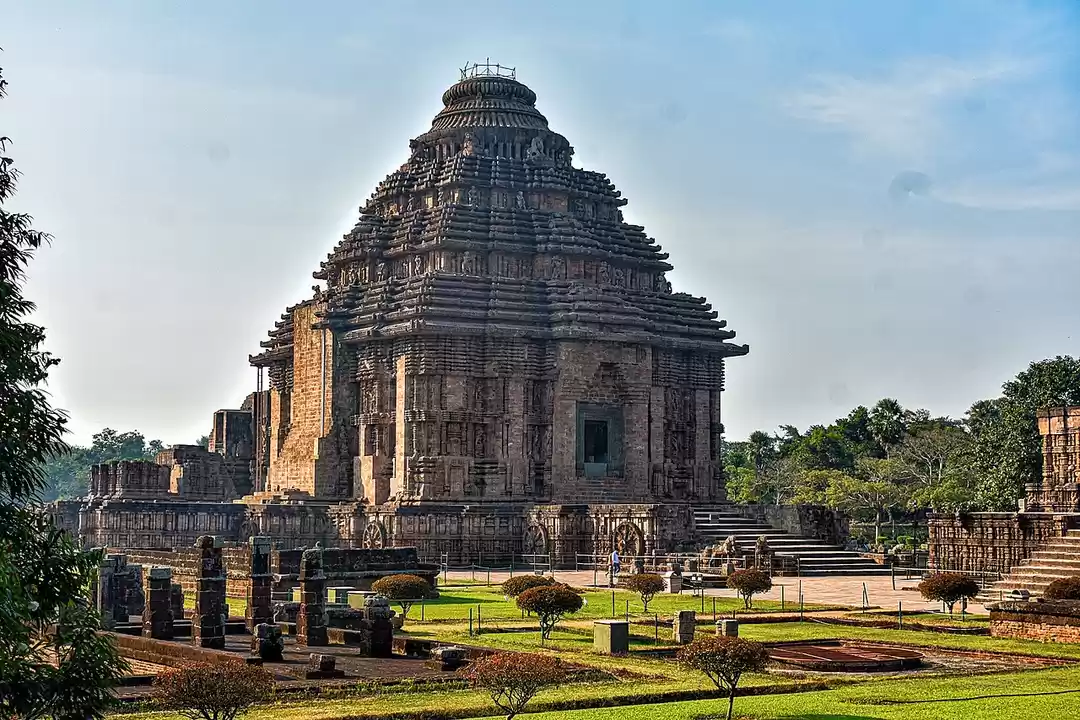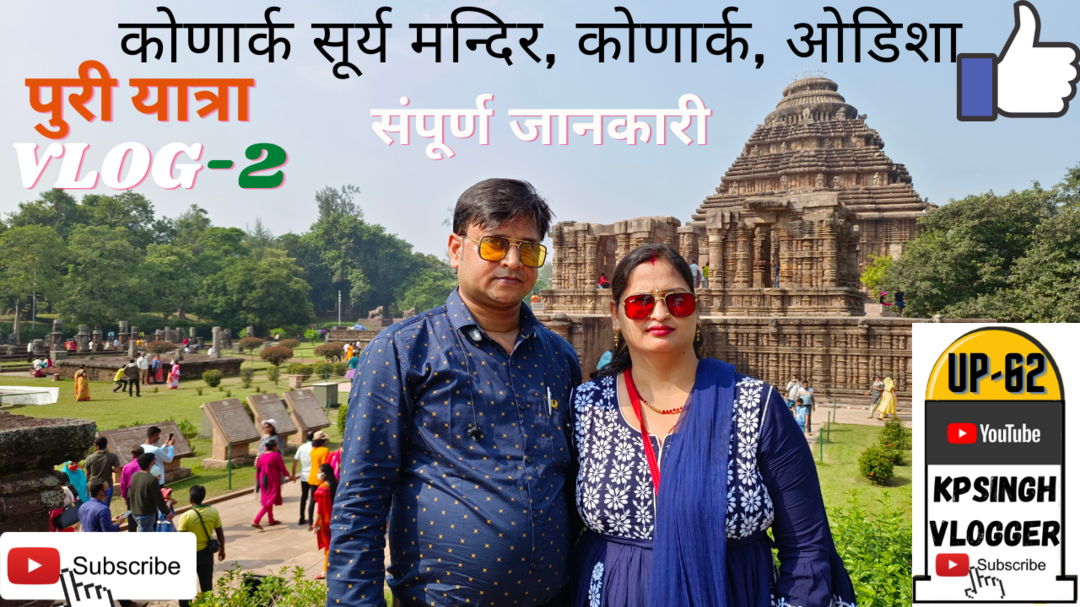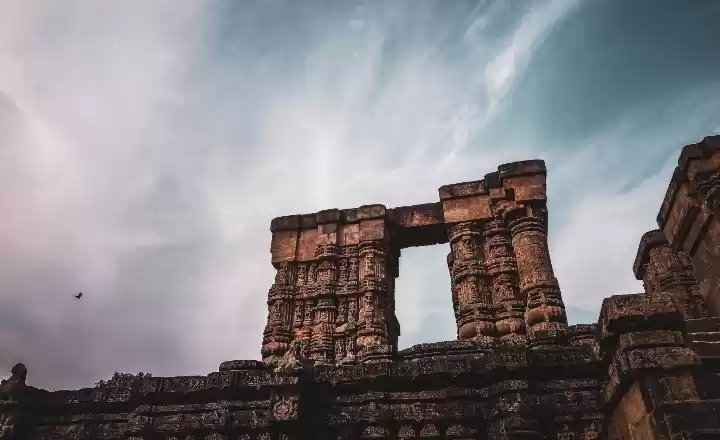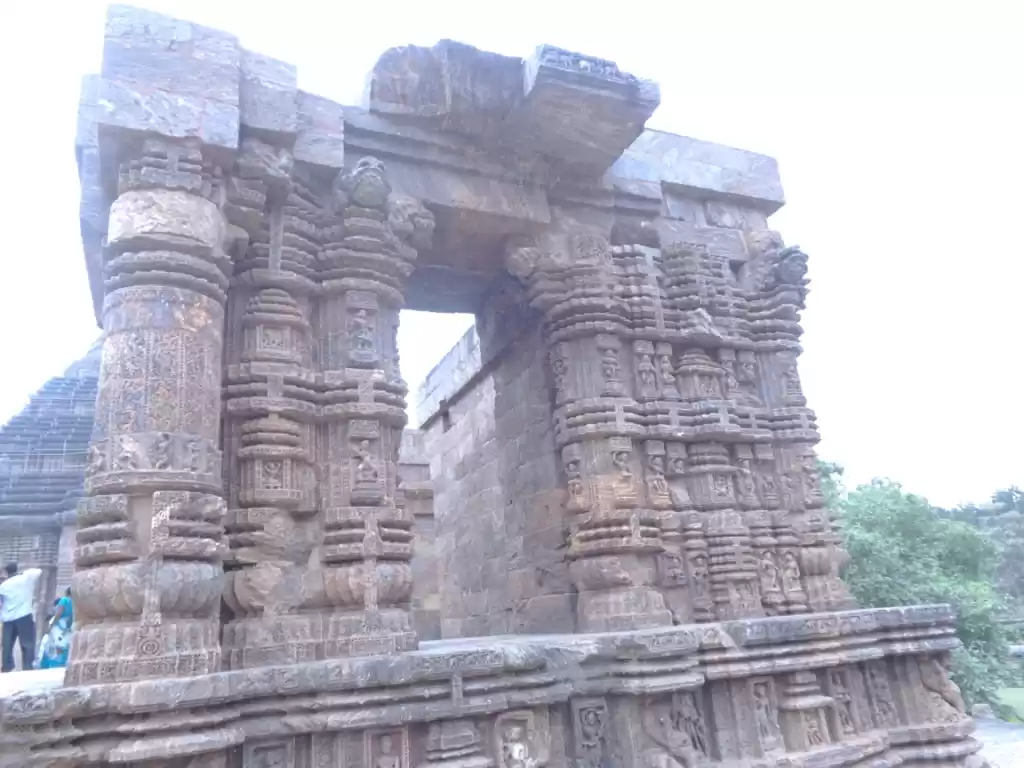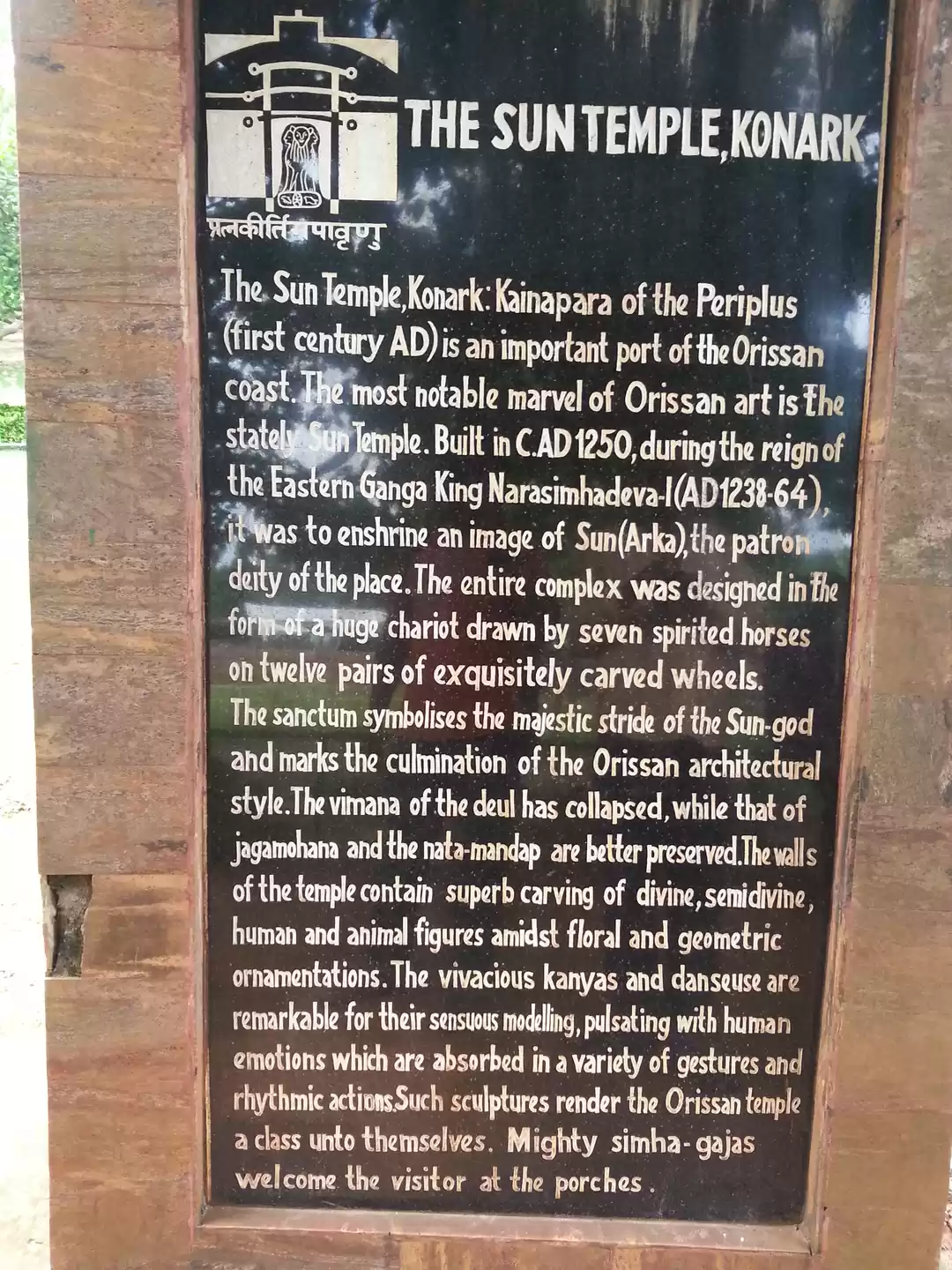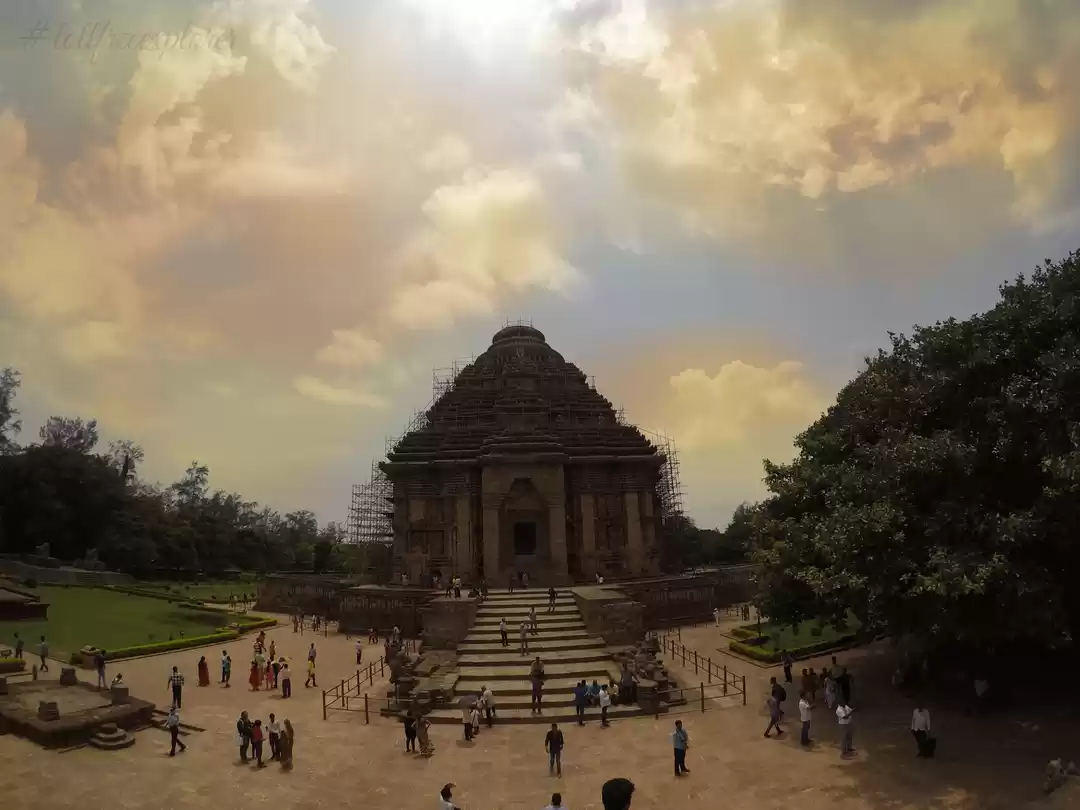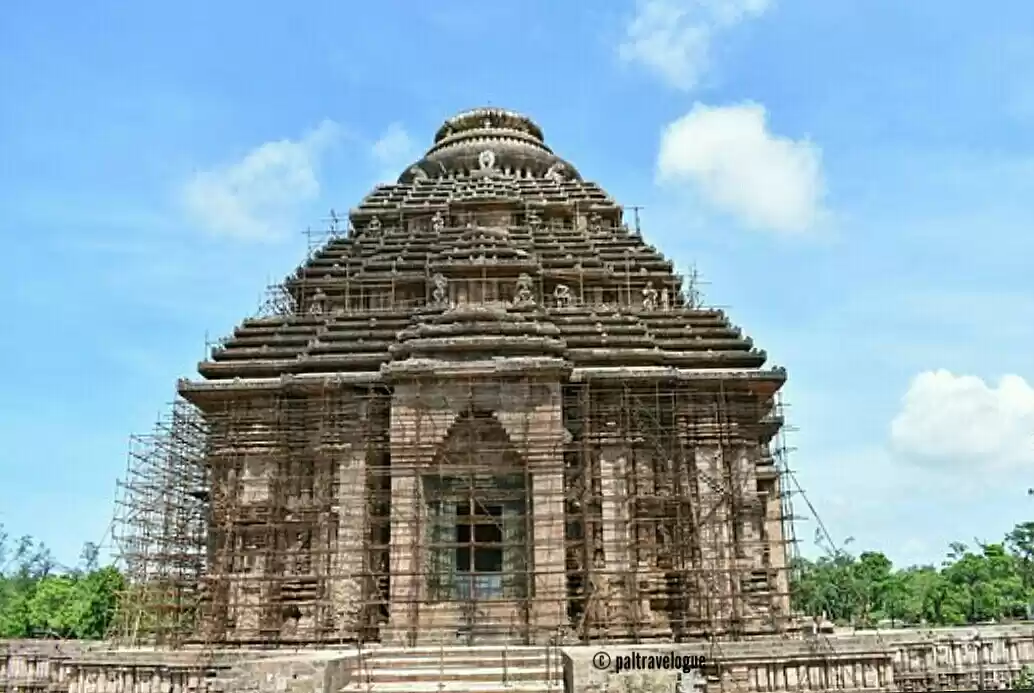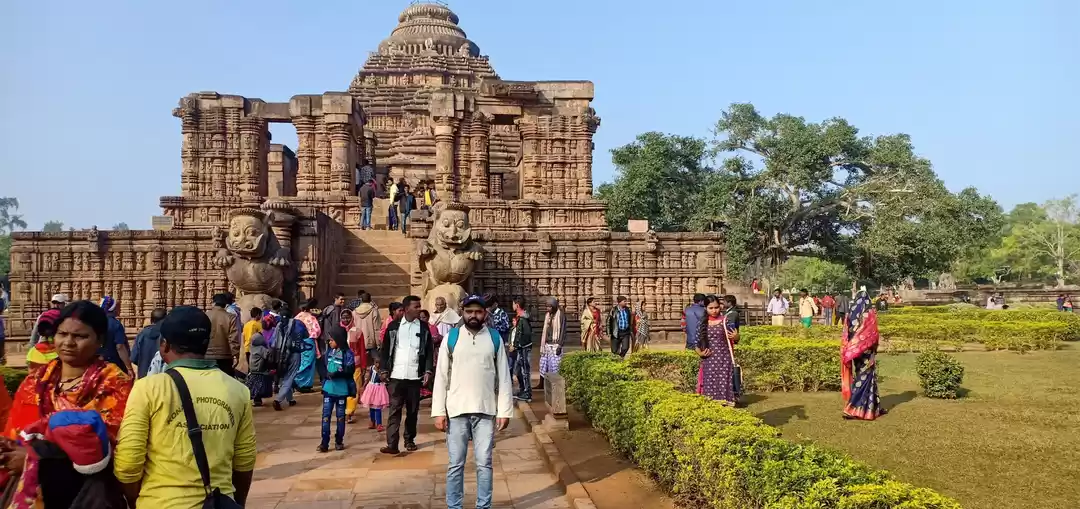Have you ever wondered how the ancient Indians built a temple that resembles a giant chariot of the Sun God, with 12 pairs of intricately carved wheels and seven horses? How did they manage to create such stunning sculptures and artworks that depict the life and culture of their times? How did they use magnets and iron beams to make the temple’s main idol float in the air? And how did they design the temple as a precise sundial that can tell the time of the day by the shadows of the wheels?
If you are curious to find out the answers to these questions, then you should definitely visit the Sun Temple Konark, one of the most magnificent and mysterious monuments of India. Located in the state of Odisha, about 35 km from Puri, the Sun Temple Konark is a UNESCO World Heritage Site and a symbol of India’s rich heritage and scientific achievements.

In this article, we will take you on a virtual tour of the Sun Temple Konark, and explore its history, architecture, sculptures, and secrets. We will also provide you with some practical information and tips for planning your trip to this amazing destination. So, let’s get started!
The History and Origin of the Sun Temple Konark
The name Konark comes from two Sanskrit words: Kona (angle) and Arka (sun). It means the place where the sun rises at an angle. According to Hindu mythology, Konark is the place where Samba, the son of Lord Krishna, was cured of leprosy by worshipping the Sun God Surya. To express his gratitude, Samba built a temple dedicated to Surya at Konark.
The current temple was built in the 13th century by King Narasimhadeva I of the Eastern Ganga Dynasty. He commissioned a famous architect named Bishu Maharana to design and construct the temple. According to legend, Bishu Maharana had a son named Dharmapada, who was only 12 years old. Dharmapada joined his father at the temple site and solved a complex problem that baffled the other craftsmen. He also sacrificed his life to save his father’s honor and reputation.
The temple was built in a span of 12 years, with the help of 1200 artisans and craftsmen. It was designed as a massive chariot of Surya, with 24 wheels (each about 10 feet in diameter) and pulled by seven horses. The temple was also adorned with thousands of exquisite sculptures and carvings that depict various aspects of Hindu mythology, culture, and society.
The temple was a center of religious and cultural activities for many centuries. It was also a beacon of scientific and artistic excellence. However, due to natural calamities, foreign invasions, and human negligence, the temple suffered extensive damage and decay over time. Many parts of the temple were destroyed or stolen by invaders or treasure hunters. Today, only the main entrance hall (Jagamohana) remains intact, while the main sanctum (Deul) is in ruins.
Despite its dilapidated condition, the Sun Temple Konark still attracts millions of visitors every year. It is also the venue of the famous Konark Dance Festival, which showcases various classical dance forms of India. The temple is also illuminated every evening by artificial lights, creating a spectacular sight for the viewers.
Also Read: Ancient Indian Architecture - The Konark Sun Temple
The Architecture and Design of the Sun Temple Konark
The Sun Temple Konark is a masterpiece of Indian architecture and design. It reflects the advanced knowledge and skills of its builders in various fields such as geometry, engineering, astronomy, art, and symbolism.
The temple complex covers an area of about 25 acres. It consists of three main structures: the Deul (main sanctum), the Jagamohana (entrance hall), and the Natamandira (dance hall). The Deul was originally about 229 feet high, while the Jagamohana is about 128 feet high. The Natamandira is located in front of the Jagamohana, and is supported by 16 pillars.
The temple is oriented towards the east, so that the first rays of the sun fall on the main idol of Surya inside the Deul. The idol was made of iron and was suspended in mid-air by magnets. The magnets were also used to create an illusion that the idol was floating without any support.
The most striking feature of the temple is its chariot-like design. The Deul represents the body of the chariot, while the Jagamohana represents its canopy. The 24 wheels represent the 24 hours of a day, and the seven horses represent the seven days of a week. The wheels are also carved with intricate patterns and symbols that represent the 12 zodiac signs, the 12 months, the 8 directions, and the 8 stages of a woman’s life.
The wheels also function as accurate sundials. By measuring the shadows cast by the spokes of the wheels, one can tell the exact time of the day. The wheels are also aligned with the sun’s movement across the sky, and indicate the solstices and equinoxes.
The temple is also decorated with thousands of sculptures and carvings that depict various scenes and themes from Hindu mythology, literature, and society. Some of the prominent sculptures include:
The Nataraja: A large statue of Lord Shiva in his cosmic dance pose, located at the entrance of the Deul.
The Navagrahas: Nine statues of the nine planetary deities, located above the main entrance of the Jagamohana.
The Surya: Three statues of the Sun God Surya in different poses and moods, located on the three sides of the Deul. The statues are made of chlorite stone and are highly polished to reflect the sunlight.
The Erotic Figures: A series of sculptures that depict various forms of love and intimacy between men and women, located on the outer walls of the temple. These sculptures are considered to be a celebration of human sexuality and fertility, as well as a symbol of spiritual union and transcendence.
The Dancers and Musicians: A series of sculptures that depict various classical dance forms and musical instruments of India, located on the walls and pillars of the Natamandira. These sculptures are considered to be a tribute to the art and culture of India, as well as a representation of the harmony and joy of life.
You May Love: Best of Orissa: A Ten Day Itinerary

The Mysteries and Secrets of the Sun Temple Konark
The Sun Temple Konark is not only a marvel of architecture and art, but also a source of many mysteries and secrets that have puzzled and fascinated people for centuries. Some of these mysteries include:
The Mystery of the Magnets: How did the ancient Indians acquire such powerful magnets that could lift a heavy iron idol in mid-air? Where did they get them from, and how did they use them? How did they balance the magnetic forces to create a stable levitation? And what happened to these magnets after the temple was destroyed?
The Mystery of the Iron Beams: How did the ancient Indians forge such long and strong iron beams that could support the massive structure of the temple? What kind of iron ore did they use, and what was their smelting process? How did they transport and install these beams without any modern machinery? And why did they use iron instead of stone or wood for their construction?
The Mystery of the Missing Stone: How did the ancient Indians carve such a huge stone that weighed more than 80 tons and measured more than 20 feet in length, width, and height? What was its purpose, and where was it placed in the temple? And what happened to this stone after it disappeared from the temple site?
The Mystery of the Wheels: How did the ancient Indians design such precise and intricate wheels that could function as sundials, calendars, compasses, and zodiacs? What was their mathematical and astronomical knowledge, and how did they apply it to their construction? And how did they carve such detailed and diverse patterns and symbols on each wheel?
The Mystery of the Dancers: Who were these dancers who performed in front of the Sun God Surya in the Natamandira? What kind of dance forms did they practice, and what were their costumes and ornaments? And what was their role and status in the society?
There are many theories and hypotheses that attempt to explain or debunk these mysteries. Some are based on scientific experiments, historical records, or archaeological evidence. Others are based on folklore stories, religious beliefs, or imaginative speculations. However, none of these theories can provide a definitive or conclusive answer to these mysteries.
Conclusion
The Sun Temple Konark is one of the most amazing and mysterious monuments of India. It is a testimony to the ancient Indian civilization’s achievements in architecture, art, science, and culture. It is also a reflection of their worldview, values, and spirituality.
If you are interested in learning more about this fascinating temple, you should plan your trip to Konark soon. Here are some practical information and tips for your visit:
- The best time to visit Konark is between October and March, when the weather is pleasant and comfortable.
- The temple is open from 6 am to 8 pm every day. The entry fee for the temple is Rs. 40 for Indian nationals and Rs. 600 for foreign nationals. There is also a fee of Rs. 10 for camera and Rs. 25 for video camera.
- You can book your tickets online through the official website of the Archaeological Survey of India (ASI) or through the Yatra app .
- You can reach Konark by road, rail, or air. The nearest airport is Bhubaneswar, which is about 65 km away. The nearest railway station is Puri, which is about 35 km away. You can also take a bus or a taxi from Puri or Bhubaneswar to Konark.
- You can find a variety of accommodation options near Konark, ranging from budget hotels to luxury resorts. Some of the popular ones are The Konark , Lotus Resort , and Sun Temple Hotel .
- You can also visit some other nearby attractions, such as the Chandrabhaga Beach, the Ramachandi Temple, the Kuruma Village, the ASI Museum, and the Mayadevi Temple.
We hope you enjoyed this article and learned something new about the Sun Temple Konark.



